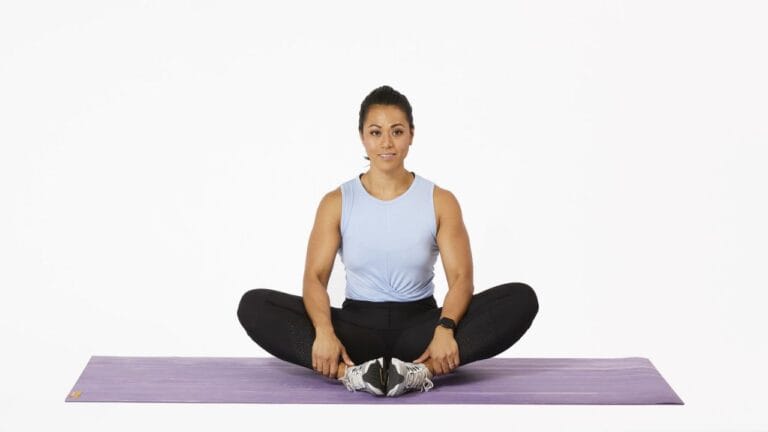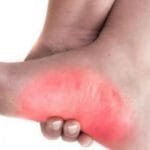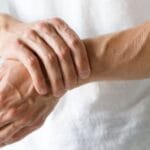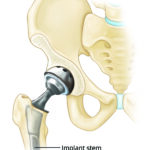Yes, but you have to go well beyond stretches and yoga poses
While the weight of the world may rest on your shoulders, your hips are responsible for carrying you through the day. They support you as you walk, squat or climb stairs. Your hip joints even make it possible for you to rotate from left to right and to move forward, backward and side to side.
Your hips are powerhouses that allow you to do amazing things. But when you do regular things like sitting — a lot — or even lightweight torturous things like wearing the wrong shoes, you can weaken your hips and bring about tightness and pain.
Speaking of tightness, if you’ve been feeling the strain for a while now, you’ve most likely Googled every hip-opening exercise and hip-opening yoga pose under the sun. No matter what you do, does it still feel like all that time in pigeon pose isn’t really helping? Well, your intuition isn’t wrong.
why hip opening exercises alone won’t help loosen tight hips and what you need to add to your routine to make things better.
Anatomy of the hip
in order for you to alleviate any problems with your hips, you first need to understand their structure and function.
Quite often, people misunderstand what the hip is, where it is and what they can do help it. So, without going too deep into the anatomical science side of things, the hip is made up of the upper leg, which is the femur, and where it attaches to on the pelvis.
that the hip joint is classified as a synovial joint.
75% of your body’s joints are synovial joints. These are highly movable joints and that’s a good thing because synovial joints allow you to move through three-dimensional space.
What makes these joints interesting is that deep in the articular surface is what’s called a synovial membrane. That membrane is responsible for creating synovial fluid, which lubricates the joints and makes movement easier.
However, the synovial membrane is only stimulated through movement. When we don’t move enough in a specific way, the membrane will stop producing synovial fluid (keep this in mind, because it’ll come back up shortly).
Why do we experience tight hips?
Going back to the anatomy of the hip, the femur is round. The socket in which the pelvis receives the femur is called the “acetabulum.” Acetabulum actually means “cup.”
The femur and the pelvis make up what is often classified as a ball and socket joint. So, just as you imagine with a mechanical ball and socket, there’s a rounded part that swivels around in that cup.
With the round ball of the femur going into the acetabulum, it would lead you to believe that the primary ranges of motion for this joint are circular. However, when in a normal day — for most human beings — are we ever required to move our hips in a full circle?
Going back to the synovial membrane, the interesting thing about it is that this membrane can only be stimulated through very specific types of movement. If you’re a very active person with tight hips, you might be wondering why you’re having trouble since you’re never sitting or standing still.
most of the things you do daily don’t allow you to fully move your hips to where the synovial membrane is stimulated. And when you don’t move your hip joints in the right way, your body signals to stop producing synovial fluid and even reduces the blood flow to those areas.
Can somebody be very active and never actually move their hips? Yes, 110%,.
Let’s take the person who’s a little older, maybe a little more sedentary and has some arthritis. They might be working a 9 to 5 at home in a bed or in a more ideal situation, such as at a desk with a good chair. They might use good posture, but even good posture in a seated position robs us of that movement and keeps us in a very specific position.
And guess what? Your bed, your chair, your car, your toilet, your couch — all of those things are likely to put you in that similar position consistently.
when you look at your hip joint’s structure and know what it needs to be lubricated, it’s clear that by sitting and doing most activities of daily living, we’re not moving our hips effectively and optimally.
We’re not accessing that synovial membrane — we’re not creating the fluid that needs to be in there. The body pretty much operates by a ‘use it or lose it’ principle. So, if we never access those full, circular 360-degree ranges of motion, well, the body is going to say, There’s nothing going on there. Let’s stop allocating resources to those areas.’ And when it sends that signal, we start experiencing a decrease in synovial fluid, we start getting a decrease of blood flow and now, we are literally dying on the vine.”
The problem might not always be obvious
that while hip tightness or pain are obvious signs that something isn’t right, the absence of pain doesn’t automatically mean that everything is OK. hat a lot of the time, repetitive motions could lead to injuries that you’re not aware of or unconscious injuries.
Let’s say someone works in a machine shop. Chances are that even though that person is upright, doing heavy work and maybe moving a lot, I bet that if we followed them, they’d do the same things over and over again all day. This could lead to what is called ‘cumulative repetitive injury’ (CRI).
These cumulative repetitive injuries aren’t conscious injuries, like if we fell off a ladder and broke a hip. These repetitive injuries accumulate over time and your body compensates over time. Then at some point in your life, your hips start bothering you out of nowhere, and you wonder what’s going on because you didn’t have a specific incident to explain it. It seems to come out of the blue.
Your routine could be part of the problem as well
Repetitive actions, along with systemic inflammation, could both play roles in the hip problems that you might be experiencing.that wearing the wrong shoes can aggravate things as well.
Say someone does have some kind of injury and they’ve altered their walking gait. That’s only going to last so long because the compensation has to come from somewhere and they’re eventually going to wear out the hip.
For example, a woman who wears high heels daily can experience this because again, she’s altering her body’s structure by wearing those shoes. The human foot was not designed to be jammed into shoes to begin with — but certainly not high heels, boots or dress shoes.his can absolutely contribute to hip problems.
Is it too late to reverse the effects of tight hip muscles?
It isn’t.
starting where you are and building from there. If you’re not very active, he movement that you incorporate into your routine shouldn’t be like a Cirque du Soleil performance. Start simple and keep moving.
With your body, if you don’t use it, you lose it. You just have to move. Start by exploring what your hips can do and your capacity for activity. If it hurts when you bring a knee tightly towards your chest, that doesn’t mean to not do that movement it at all. It just means don’t do it until it hurts. Start where you can and build from there.
If you’re experiencing pain, pinching and popping or only getting relief when you’re moving around or in certain positions,suggests seeing a qualified chiropractor. Chances are that much more is going on.
The very interesting thing is that we often find that low back pain is intimately related with hip dysfunction. This occurs when the back is making up for the loss of the hip’s full capabilities. A person can have long-standing hip issues like range of motion loss, fibrosis in the joints or the synovial membranes going silent. They can experience those issues for many years and have absolutely no idea.
Hip-opening exercises to do at home
not against hip-opening stretches or yoga poses. nothing wrong with doing them, but your routine can be even better when you add movements that allow your hip joints to get their full range of motion.
If you look at the ranges of motion involved with hip stretches, most tend to involve linear movements. So we don’t get that full expression, which again, is needed by the hip to access that rotational component. Otherwise, it will continue to degrade — and it will continue to tighten up.
Controlled articular rotations (CARs) are movements that allow your hip joints to achieve full expression and keep the synovial membranes stimulated. He recommends doing CARs daily to help alleviate hip tightness, but his disclaimer is that you’re not going to get better overnight. It’s going to take time.
The following are two types of CARs that you can do at home.
Controlled Articular Rotations (CARs) For The Hips
Hip Capsular Motion Exercise





